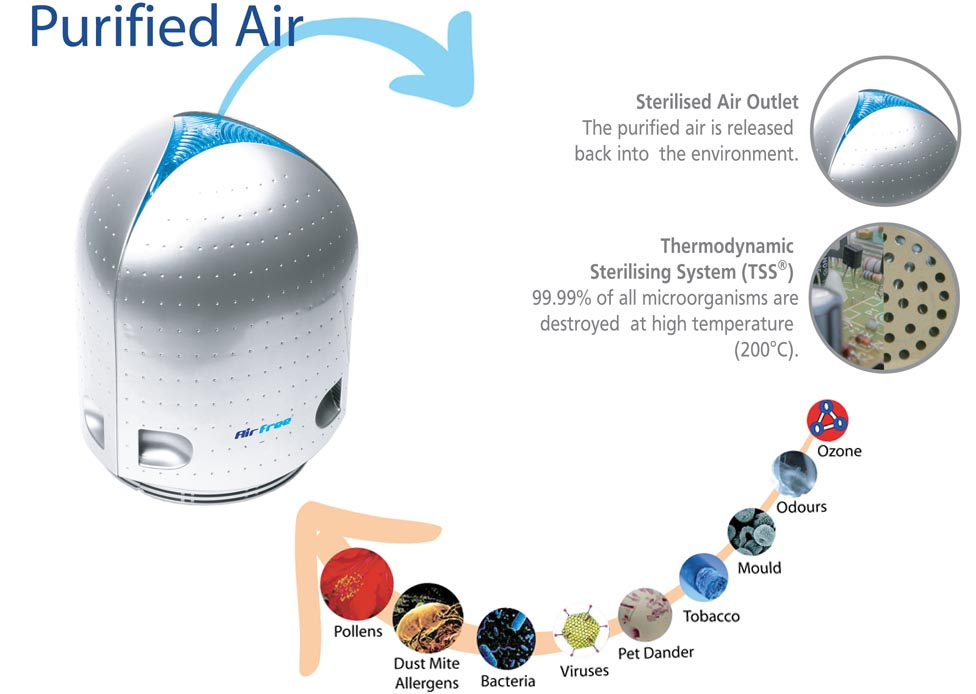Viruses

Inactivate them through heat
Viruses are not considered living organisms but they depend on living cells in order to multiply. The virus structure includes an envelope consisting of protein and genetic material, such as DNA or RNA. All these components are sensitive to temperature. The genetic materials and proteins have complex structures to regulate their function, and changing this structure can lead to a loss of function known as denaturation. Denaturation occurs through two basic means: a change in pH or a change in temperature.
Some examples of virus inactivation through heat
Numerous studies have been conducted on the inactivation of viruses through heat application. For instance, the HIV virus in the blood will die when exposed to 77°C for only 0.006 seconds. In another study, "parvovirus" and "phage phiX174" were completely inactivated when exposed to 103°C for 90 seconds. In the case of herpes viruses, elevated temperatures inhibit the release of proteins necessary for a successful infection.
Airborne viruses are no different. A study of respiratory syncytial virus (the main cause of wheezing in children less than 2 years old) showed that when the virus is exposed to 65°C for 45 minutes, its infection capacity is decreased, and the conformational proteins are transformed, reducing the activity of substances responsible for inflammation, hypersensitivity and airway damage.
The SARS virus (causative agent of Severe Acute Respiratory Syndrome) has thermosensitive (heat-sensitive) proteins in its envelope, which can be fully denatured at 55°C, the same temperature at which the SARS virus was proven to be inactivated.
Similarly, the proteins that are essential for the transmission of infectious influenza viruses are sensitive to variations in pH and temperatures between 55°C and 70°C6.
Airfree® and its TSS™ ceramic core;
We have just seen some examples of virus inactivation through heating. In all these cases the temperatures were lower than the internal temperature of 200°C found in the Airfree TSS™ ceramic core. Since 1977, studies show that the higher the temperature, the faster the proteins are denatured. Therefore, we can conclude that in most cases, Airfree ® purifier is effective in inactivating proteins from viruses, resulting in their inability to cause infections.
AIRFREE® PURIFIERS are up to 99% efficient in destroying airborne mold spores, bacteria, viruses, ozone, mite and dust allergens, and other airborne allergens derived from animals and pollen, and they are major allies in increasing the quality of life of people who suffer from allergies.
How do they work?
They dramatically reduce air pollution by burning the microorganisms. As a result, the contaminated air is drawn into the Airfree® ceramic core and destroyed at high temperatures. This air purification cycle is silent, requires no maintenance and is guaranteed by numerous tests.

FAQ
Q: Will Airfree prevent me from getting any virus disease?
A: We cannot say it will prevent anyone from getting any disease, especially because there are diseases that are transmitted by “touch” and not through the air. What we can say is that independent tests show an average of 85 – 99% reduction in airborne microorganisms and help diminish germs exposure.
DOWNLOADS - VIRUSES


